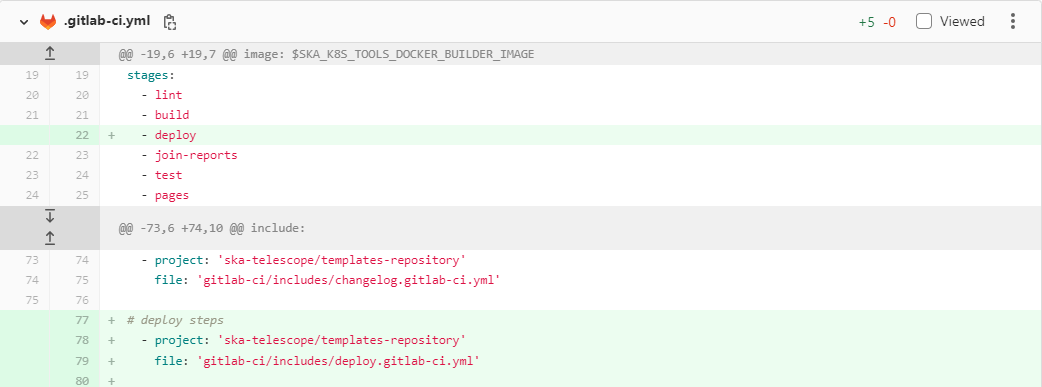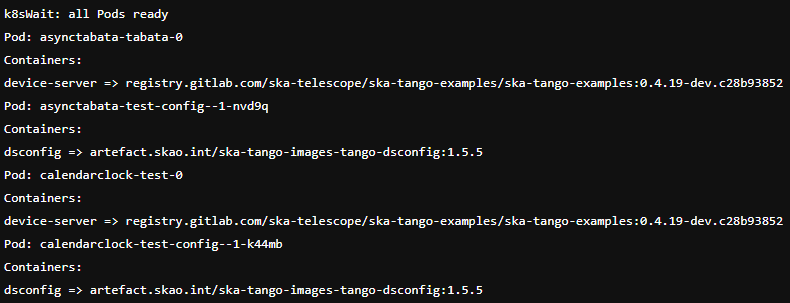New Environments on STFC
In order to provide a way for SKA developers to install, uninstall or update their artefacts into an isolated environment, a unified approach - based on GitOps - has been created.
Once a developer pushes a change to the repo, the repo detects this change, updates and pushes the manifest into the cluster and a new environment can be created to test the commited changes.
This unified approach adds a new stage - the deploy stage - to the pipeline that will make 4 jobs available:
Deploy Dev Environment - first job to be executed to create the new environment
Info Dev Environment - once the deploy and test jobs have been executed successfully, this job can be executed to provide an overview of the environment deployed
Stop Dev Environment - job automatically executed after 4 hours, deleting the created envrionment. It can also be executed manually, if necessary, before the defined 4 hours
Test Dev Environment - second job to be executed, automatically, once the deploy job finishes to check that something has been deployed and is running
Once, at least, the Deploy and Test Dev Environment jobs are executed successfully a new test environment will be deployed into STFC. Only one environment is allowed per project. If you have feedback about this, please raise it in #team-system-support to improve the solution.
Environment Setup
To enable this new stage, in your .gitlab-ci.yml, add the deploy stage and include the deploy template as shown below:

Adding the deploy stage to the pipeline
In your values.yaml file, the “deploy_service” parameter should be set to true if, for the service for which this is set, you want it to be deployed into the development environment, ignoring the parameter alltogether works as setting to true as well. If you don’t want to deploy the service to the environment and prefer to work on it locally, this parameter should be set to false.
...
example-device-server:
file: "data/example-device-server.yaml"
polling: 1000
deploy_service: false
...
If you want to talk to the exposed services on the cluster by MetalLB, you need to be inside STFC VPN.
If you are on Ubuntu or MacOS, you don’t have to configure anything else as it’s included within the VPN configuration, but if you are on WSL2 or using a container for development, you have to add the following configurations in the /etc/resolv.conf file.
...
nameserver 192.168.99.194
...
Environment Usage Examples
After the setup has been executed, create a new pipeline. The deploy stage should now be shown with its 4 corresponding jobs.
For the current example, the deploy stage was added after the build stage on the ska-tango-examples repo.

Deploy stage added to the pipeline
Run the deploy job and check that the manifest file, named ci-dev-<project-name>.yaml was pushed to the CICD Gitlab K8s Agents Config repo.
The test job will be executed automatically, showing the running pods and - for the scope of this example - the device servers deployed.

Test job outputs
By executing the info job, the overview of the images being used for every pod containing the version and the associated commit ID will be provided.
In addition, the instructions on how to connect to the created environment are also provided.

Info job outputs
Having connected to the environment you can start using it as needed. The example below shows a simple test to confirm that the local machine and the remote cluster are able to communicate.

Pinging a device from the local machine to the remote cluster